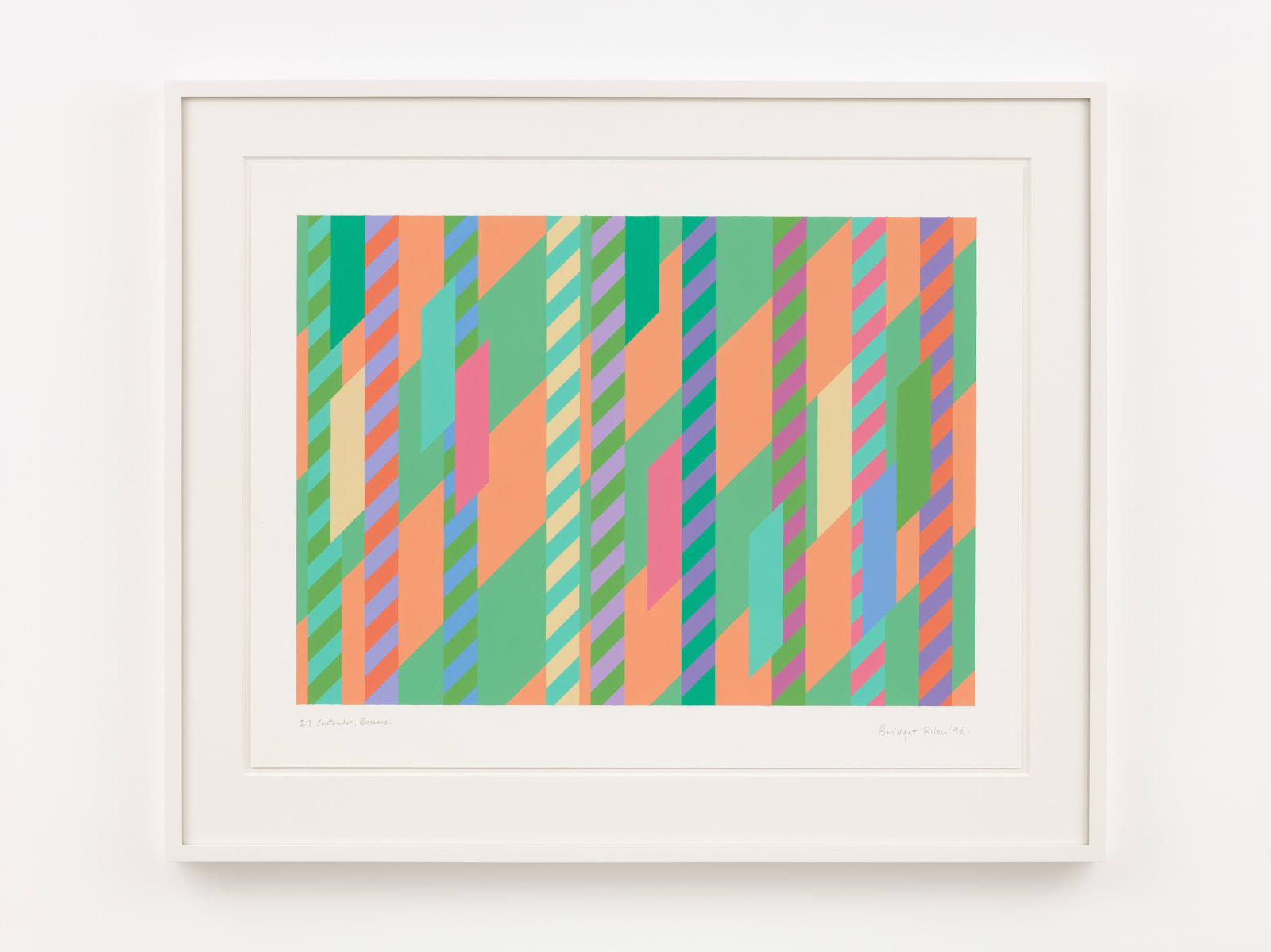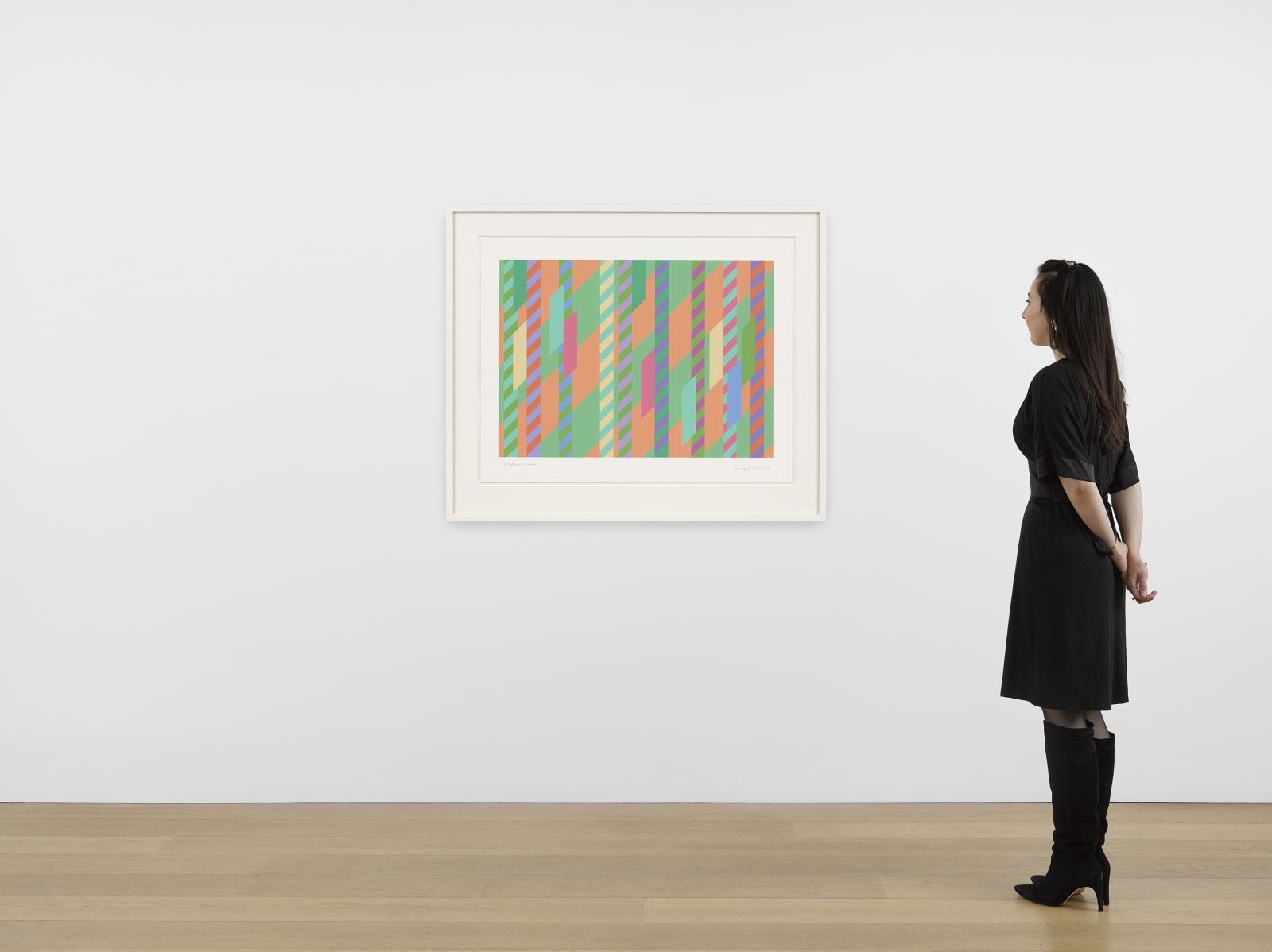

Bridget Riley (b. 1931)
Framed: 87.4 x 105.3 x 5 cm 34 ⅜ x 41 ½ x 1 ⅞ in
Provenance
Collection of the artist
Fortescue and Oldfield (acquired from David Zwirner)
Exhibitions
David Zwirner, "Bridget Riley: Studies, 1985-1997" London, 2020
Yale Center for British Art, "Bridget Riley: Perceptual Abstraction", 2022
Literature
Since 1961, Bridget Riley (b. 1931) has focused exclusively on seemingly simple geometric forms, such as lines, circles, curves, and squares, arrayed across a surface - whether a canvas, a wall, or paper - according to an internal logic. The resulting compositions actively engage the viewer, at times triggering sensations of vibration and movement. This sense of dynamism was explored to great effect in the artist's earliest black-and-white paintings, which established the basis of her enduring formal vocabulary. In 1967, Riley introduced color into her work, thus expanding the perceptual and optical possibilities of her composition.
In addition to the canvases for which she is known, Riley has also created an extensive body of studies and preparatory works over the course of her lengthy career. These are an integral component of her painterly practice that serve as an important testing ground where she can experiment and work out her ideas. In the mid-1980's. Riley began to integrate form within the logic of her stripes, creating increasingly comlex compositions over the course of several years that develop from straight links to energetic diagonals and would culminate in her breakthrough 'rhomboid' paintings. In the earliest examples, Riley maintains tha basic structures of her stripes, but adds rhomboid shapes in contrasting colours within a number of the bands, giving the compositions a subtle sense of both upward and horizontal motion. In subsequent works, such as the present study, Riley complicated the relationship between colour and form, constructing trucated diagonals in varying colors from successive rhombuses arrayed across the paper. These sophisticated arrangements cohere into a dynamic sense of diagonal motions (or, "zigs" as Riley refers to them - one half of a zigzag motif).

